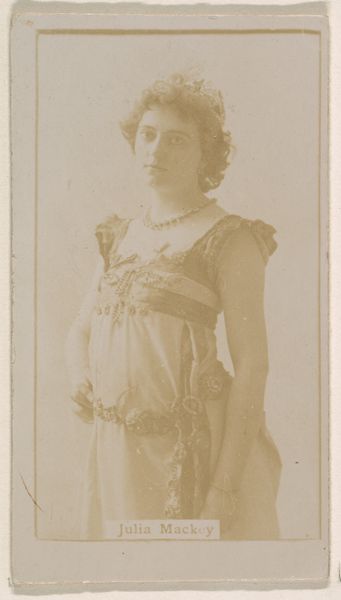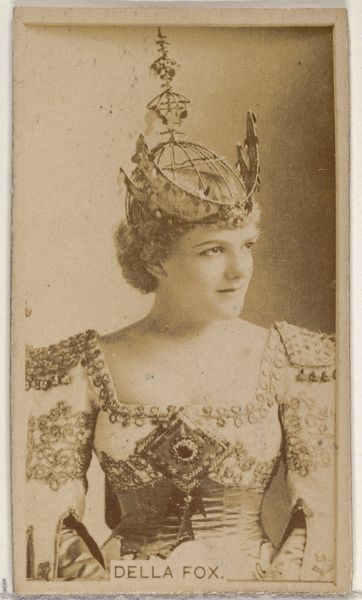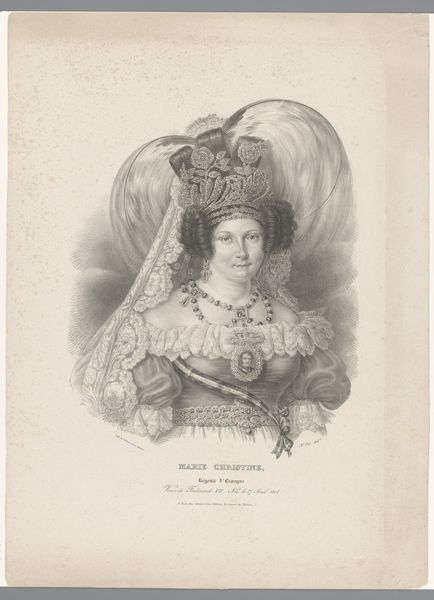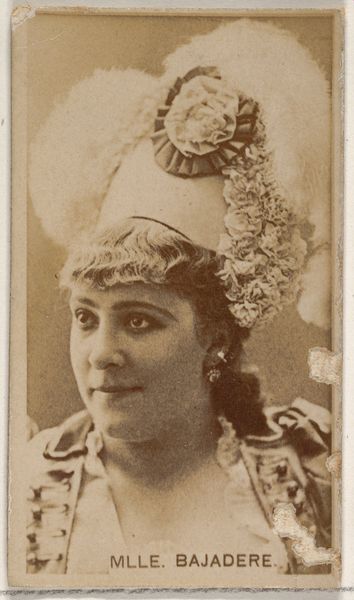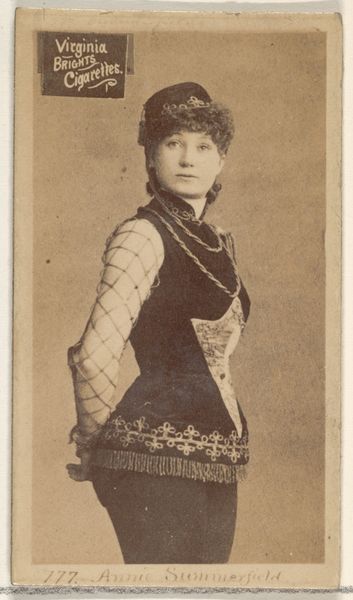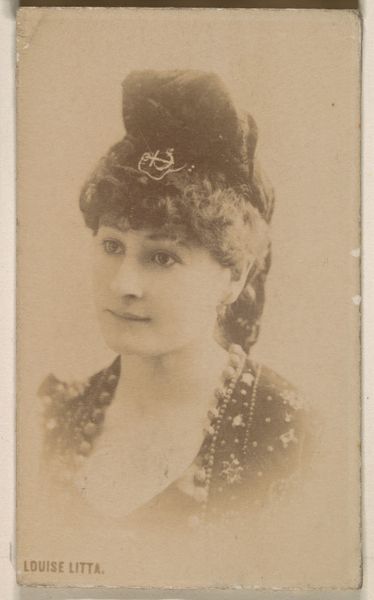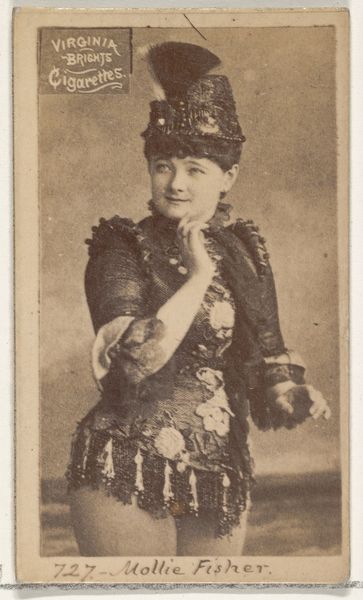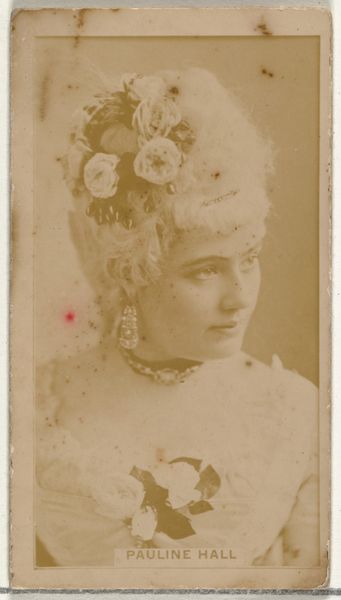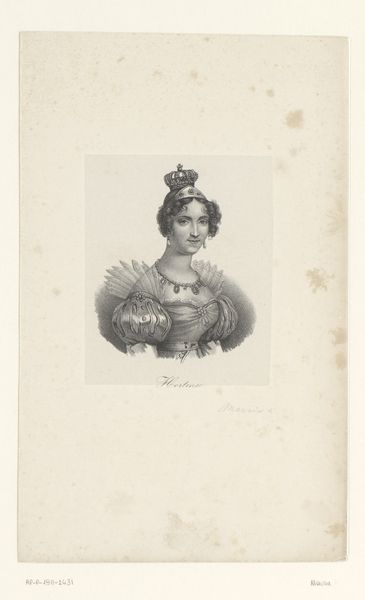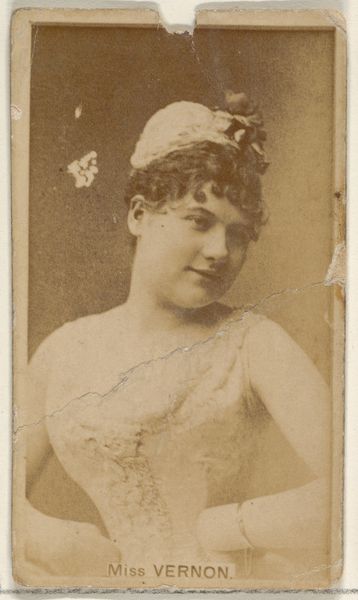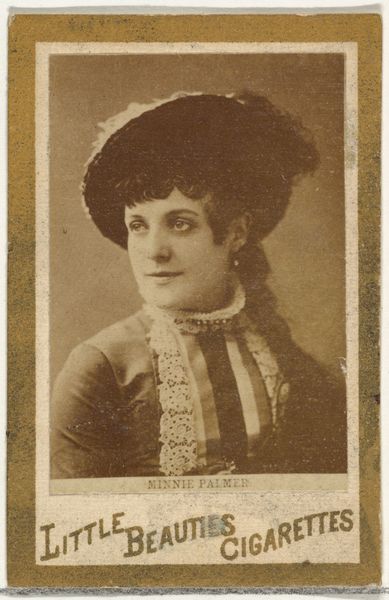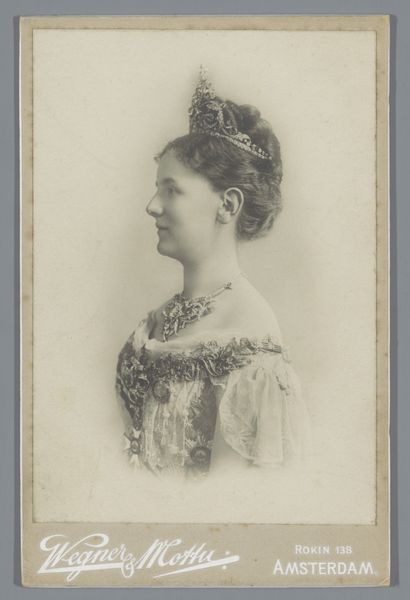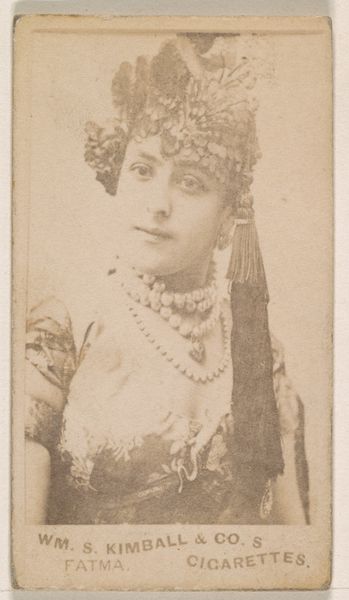
Maude Branscomb as "The Daughter of the Regiment," from the series Fancy Dress Ball Costumes (N73) for Duke brand cigarettes 1889
0:00
0:00
#
portrait
#
water colours
# print
#
figuration
#
coloured pencil
Dimensions: Sheet: 2 3/4 x 1 1/2 in. (7 x 3.8 cm)
Copyright: Public Domain
Curator: Check out this captivating print: “Maude Branscomb as ‘The Daughter of the Regiment,’” created around 1889 by W. Duke, Sons & Co. It’s one in a series of “Fancy Dress Ball Costumes” featured on cigarette cards. The medium is listed as colored pencil and print; it’s giving watercolor vibes, right? Editor: Oh, absolutely! It's precious, almost overwhelmingly so. The blue of the uniform is so vibrant, it’s childlike in its purity, juxtaposed with Maude’s kind, yet knowing gaze. And that drum hat! It is the cutest. Is it strange to use “cute” about a tobacco ad? Curator: Not at all! These cards were designed to be collected, almost like little works of art slipped into your pack of Duke's. Think about the context: tobacco companies marketing towards mass audiences. Using a woman dressed up for a costume ball allows for a broad appeal. The theatrical element adds another layer. These are early uses of celebrity endorsements. Editor: Interesting. I was just thinking, “theatre”. It has such a strong narrative feel – it feels as though she's stepped out of a musical and that drum reminds you of how theatre music can evoke powerful, dramatic feeling. But marketing a character like this... it’s complex. Were they celebrating women breaking into traditionally male roles, or simply using feminine charm to sell a product? Curator: That's precisely the tightrope they walked! I suspect the appeal was more about the spectacle, the romance, and the aspirational lifestyle associated with fancy dress balls and theatre. They tapped into a sense of playful escapism more than making a political statement, however inadvertently. This predates mass advertising in so many ways. It also demonstrates the use of Japonisme stylistic elements within popular art of this period, too! Editor: Still, there’s a slight rebellious air to the entire ensemble, despite being, essentially, an advert for a vice. A Daughter of the Regiment in 1889 suggests ideas about what kinds of images could or could not, and should or should not, appeal to women in popular media. Curator: It speaks to the cultural context. What was acceptable, how identity was being portrayed in a transitional era of the country as well as this era’s art world, all encapsulated in a collectible card from a cigarette pack! Editor: It is wild how all of that could come together in something so small and beautifully rendered. It's also quite special thinking about those images were consumed, discarded, or cherished— each one tells such a story that way.
Comments
No comments
Be the first to comment and join the conversation on the ultimate creative platform.

